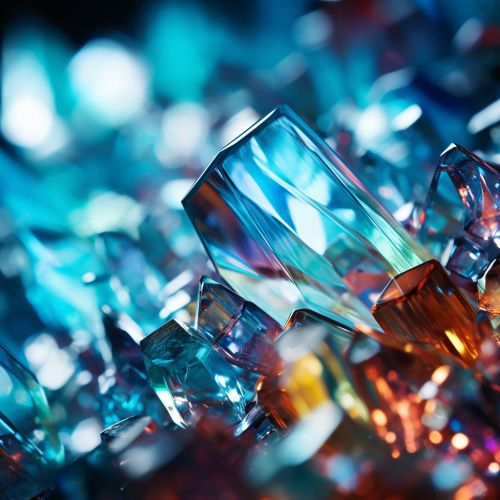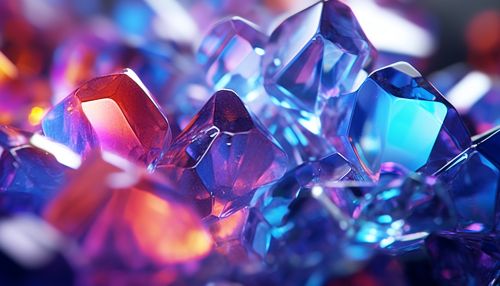Bioactive Glass
Introduction
Bioactive glass is a type of glass that has the ability to interact with biological material. It was first developed in the 1960s by Larry Hench and his team at the University of Florida. Bioactive glass has unique properties that allow it to bond with hard and soft tissues in the body, making it an important material in the field of biomedical engineering and regenerative medicine.
History
The development of bioactive glass began in the 1960s with the work of Larry Hench and his team at the University of Florida. They were tasked with developing a material that could help heal the bones of soldiers injured in the Vietnam War. After several years of research, they developed a type of glass that could bond with bone and stimulate the body's natural healing process. This was the first bioactive glass, known as 45S5, which is still widely used today.
Composition
Bioactive glass is composed primarily of silicon dioxide (SiO2), sodium oxide (Na2O), calcium oxide (CaO), and phosphorus pentoxide (P2O5). The exact composition can vary depending on the specific application of the glass. For example, bioactive glasses used in bone grafts often have a higher percentage of calcium and phosphorus to mimic the composition of natural bone.


Properties
Bioactive glass has several unique properties that make it suitable for use in medical applications. One of its most important properties is its ability to bond with both hard and soft tissues in the body. When bioactive glass comes into contact with body fluids, it begins to release ions. This ion release leads to the formation of a layer of hydroxyapatite, a mineral found in natural bone, on the surface of the glass. This layer allows the glass to bond with the surrounding tissue.
In addition to its bonding ability, bioactive glass also has the ability to stimulate the body's natural healing process. When the glass dissolves, it releases ions that stimulate the body's cells to produce new tissue. This makes bioactive glass an ideal material for use in bone grafts and other regenerative medicine applications.
Applications
Bioactive glass has a wide range of applications in the field of medicine. One of its most common uses is in bone grafts. The glass can be shaped into granules, blocks, or scaffolds and then implanted into the body to replace missing or damaged bone. The glass bonds with the surrounding bone and stimulates the body to produce new bone tissue, effectively healing the graft.
In addition to bone grafts, bioactive glass is also used in dental applications. It can be used to treat tooth sensitivity by forming a protective layer over the exposed dentin. It is also used in dental implants to promote bonding with the surrounding bone.
Bioactive glass is also used in soft tissue repair. It can be used to promote wound healing and to treat ulcers. The glass stimulates the body's cells to produce new tissue, speeding up the healing process.
Future Developments
Research into bioactive glass is ongoing, with scientists continually developing new compositions and applications for the material. One area of research is the development of bioactive glass that can deliver drugs or other therapeutic agents. This could allow for targeted treatment of specific areas of the body.
Another area of research is the development of bioactive glass for use in tissue engineering. This could involve creating scaffolds out of bioactive glass that can support the growth of new tissue. This could potentially be used to repair or replace damaged organs.
